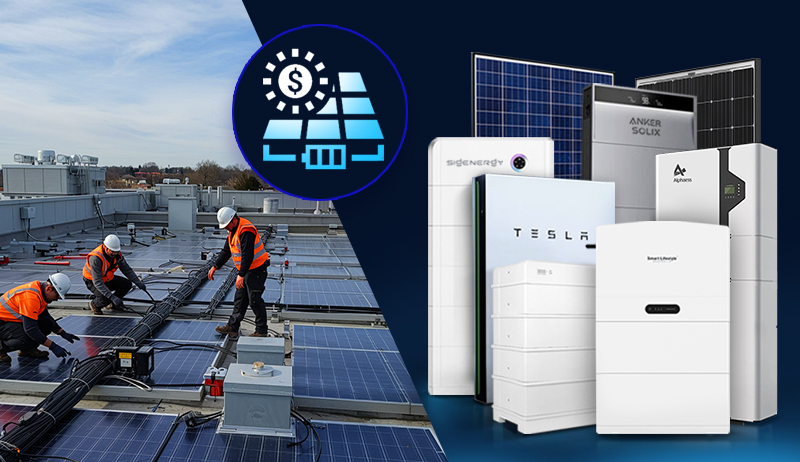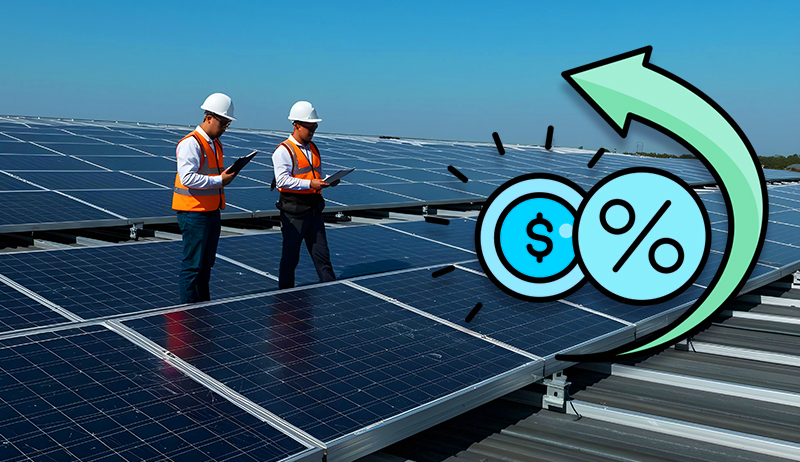Sustainable Transportation
Introduction Sustainable Transportation in New York City
New York City, the bustling metropolis known as the “Big Apple,” is not only a global center of commerce and culture but also a trailblazer in sustainable transportation.
In a city where millions of people move each day, implementing eco-friendly transportation solutions is crucial to mitigate congestion, reduce emissions, and improve the overall quality of life for residents. From a robust public transit system to bike-friendly infrastructure and innovative initiatives,
New York City is leading the charge towards a more sustainable and efficient transportation future. This article delves into the sustainable transportation options in the city that never sleeps and highlights New York City’s dedication to forging a greener path.
Sustainable Transportation in New York City
1. Extensive Public Transit:
New York City boasts one of the most extensive and efficient public transit systems in the world. The Metropolitan Transportation Authority (MTA) operates an intricate network of subway trains and buses that connect the five boroughs. By encouraging residents and visitors to rely on public transportation, the city significantly reduces the number of private vehicles on the road, thereby decreasing traffic congestion and air pollution.
2. Bike-Friendly Infrastructure:
New York City has made remarkable strides in becoming more bike-friendly. The implementation of bike lanes, protected cycling paths, and bike-sharing programs has fostered a culture of cycling as a viable transportation option. Initiatives such as “Citi Bike” have been instrumental in promoting active transportation and reducing reliance on motor vehicles, resulting in reduced emissions and improved air quality.
3. Carpooling and Ride-Sharing:
To combat congestion and further reduce the number of cars on the road, New York City encourages carpooling and ride-sharing. Ride-sharing services and carpool programs offer convenient and cost-effective options for commuters, reducing the overall number of vehicles on the streets. These initiatives not only contribute to sustainability but also enhance social connectivity and foster a sense of community among residents sharing rides.
4. Electric Vehicles (EVs):
New York City has been actively promoting the adoption of electric vehicles (EVs) to combat air pollution and reduce greenhouse gas emissions. The city has invested in the installation of EV charging stations throughout its boroughs, making it easier for residents to charge their electric vehicles. In addition, incentives and rebates are provided to encourage the purchase of EVs, accelerating the transition towards a greener transportation fleet.
5. Pedestrian-Friendly Infrastructure:
New York City recognizes the importance of creating walkable neighborhoods and pedestrian-friendly infrastructure. Initiatives like the “Open Streets” program and the addition of pedestrian plazas have reclaimed space from vehicles and transformed them into vibrant public spaces for people to enjoy. This not only enhances the livability of the city but also promotes walking as a sustainable mode of transportation.
Bike-Friendly Infrastructure in New York City
Creating bike-friendly infrastructure in New York City is essential to encourage cycling as a viable and sustainable mode of transportation. To improve bike-friendliness in the city, several initiatives and infrastructure improvements can be implemented:
1. Protected Bike Lanes: Develop more protected bike lanes separated from motor vehicle traffic by physical barriers or parked cars. These lanes provide a safer and more comfortable space for cyclists, reducing the risk of accidents.
2. Bike-sharing Programs: Expand and promote bike-sharing programs throughout the city, making it easier for residents and visitors to access bicycles for short trips.
3. Bike Parking: Increase the availability of secure bike parking racks and bike storage facilities at public places, transportation hubs, office buildings, and residential areas.
4. Bike Corridors: Create dedicated bike corridors or routes that connect different neighborhoods and major destinations, facilitating longer bike commutes and recreational rides.
5. Bicycle Traffic Signals: Install dedicated traffic signals for cyclists at intersections to improve safety and reduce conflicts with motor vehicles and pedestrians.
6. Bike Repair Stations: Set up bike repair stations at strategic locations, equipped with tools and air pumps, to help cyclists with minor maintenance issues on the go.
7. Education and Safety Programs: Implement educational campaigns and safety programs to raise awareness among cyclists, motorists, and pedestrians about sharing the road safely.
8. Coordination with Public Transit: Integrate cycling with public transit by providing bike racks on buses and bike storage options at subway and train stations, enabling a seamless multi-modal commute.
9. Bike-friendly Road Design: Incorporate bike-friendly features into road design, such as bike boxes at intersections, bike-friendly traffic calming measures, and bicycle-friendly roundabouts.
10. Active Transportation Promotion: Encourage employers and organizations to promote active transportation, including cycling, by offering incentives such as bike commuting benefits and facilities for employees.
11. Greenways and Recreational Trails: Develop greenways and recreational trails that provide safe and scenic routes for cyclists, connecting parks, waterfronts, and other recreational areas.
12. Community Engagement: Involve local communities and cycling advocates in the planning and decision-making process to ensure that bike-friendly infrastructure meets the needs of the people who use it.
By implementing these bike-friendly infrastructure improvements and initiatives, New York City can make significant strides toward becoming a more sustainable and cyclist-friendly city, offering a healthier and eco-friendly transportation option to its residents and visitors.
Conclusion Sustainable Transportation in New York City
New York City stands as a beacon of sustainable transportation, demonstrating that even a bustling metropolis can successfully prioritize eco-friendly commuting options.
Through an extensive public transit system, bike-friendly infrastructure, carpooling and ride-sharing initiatives, support for electric vehicles, and the creation of pedestrian-friendly spaces, the city is reshaping the way residents and visitors navigate its streets.
By prioritizing sustainability, New York City is reducing congestion, improving air quality, and creating a more livable environment for its diverse population. As other cities look to New York City’s example, it becomes evident that sustainable transportation is not just an aspiration but an attainable goal that benefits both the planet and its inhabitants.
https://www.exaputra.com/2023/07/sustainable-transportation-in-new-york.html
Renewable Energy
ACORE Applauds Maryland Gov. Moore’s New Executive Order on Energy Affordability and Reliability
-
Grid Infrastructure -
Policy -
Siting & Permitting Reform -
Technology -
Press Releases
ACORE Applauds Maryland Gov. Moore’s New Executive Order on Energy Affordability and Reliability
ACORE Applauds Maryland Gov. Moore’s New Executive Order on Energy Affordability and Reliability
FOR IMMEDIATE RELEASE
Dec. 19, 2025
WASHINGTON, D.C. — The American Council on Renewable Energy (ACORE) issued the following statement from ACORE President and CEO Ray Long in response to Governor Wes Moore’s announcement of new initiatives to build an affordable and reliable energy future for Maryland.
“ACORE applauds Gov. Wes Moore for setting forth a new series of energy initiatives that seek to stabilize energy bills while ensuring grid reliability and efficiency for Marylanders. In particular, ACORE commends key provisions in the order to increase the deployment of advanced transmission technologies; streamline the siting and permitting of high-voltage transmission, energy storage, and other infrastructure; advance wholesale market reforms; and more. As the country enters a new era of electricity demand, initiatives like Gov. Moore’s will facilitate significant progress toward building a modern and reliable grid needed to maintain economic competitiveness and keep the lights on,” said ACORE President and CEO Ray Long.
###
ABOUT ACORE
For over 20 years, the American Council on Renewable Energy (ACORE) has been the nation’s leading voice on the issues most essential to clean energy expansion. ACORE unites finance, policy, and technology to accelerate the transition to a clean energy economy.
For more information, please visit http://www.acore.org.
Media Contacts:
Stephanie Genco
Senior Vice President, Communications
American Council on Renewable Energy
communications@acore.org
The post ACORE Applauds Maryland Gov. Moore’s New Executive Order on Energy Affordability and Reliability appeared first on ACORE.
https://acore.org/news/acore-statement-on-gov-wes-moores-new-energy-executive-order/
Renewable Energy
Meat–It’s What’s for Dinner, if You Don’t Care about the Animals or the Planet
 We often hear meat-eaters say things like, “If beef isn’t good, why do the manufacturers of plant-based burgers try so hard to make their burgers taste like real meat?”
We often hear meat-eaters say things like, “If beef isn’t good, why do the manufacturers of plant-based burgers try so hard to make their burgers taste like real meat?”
There is no doubt that cow and pig meat tastes and smells great; every vegan on Earth will tell you that.
The problem lies elsewhere, in a) the environmental impact of clearing the rainforests to make room for more cows, and b) the cruelty inherent in factory farming and the slaughtering of the animals.
Meat–It’s What’s for Dinner, if You Don’t Care about the Animals or the Planet
Renewable Energy
FAQs: Your Most Common Commercial Solar Questions Answered
The post FAQs: Your Most Common Commercial Solar Questions Answered appeared first on Cyanergy.
https://cyanergy.com.au/blog/faqs-your-most-common-commercial-solar-questions-answered/
-
Climate Change4 months ago
Guest post: Why China is still building new coal – and when it might stop
-
Greenhouse Gases4 months ago
Guest post: Why China is still building new coal – and when it might stop
-
Climate Change2 years ago
Spanish-language misinformation on renewable energy spreads online, report shows
-

 Greenhouse Gases2 years ago
Greenhouse Gases2 years ago嘉宾来稿:满足中国增长的用电需求 光伏加储能“比新建煤电更实惠”
-
Climate Change Videos2 years ago
The toxic gas flares fuelling Nigeria’s climate change – BBC News
-

 Climate Change2 years ago
Climate Change2 years ago嘉宾来稿:满足中国增长的用电需求 光伏加储能“比新建煤电更实惠”
-

 Carbon Footprint2 years ago
Carbon Footprint2 years agoUS SEC’s Climate Disclosure Rules Spur Renewed Interest in Carbon Credits
-
Climate Change2 years ago
Why airlines are perfect targets for anti-greenwashing legal action








 Full energy assessment
Full energy assessment



